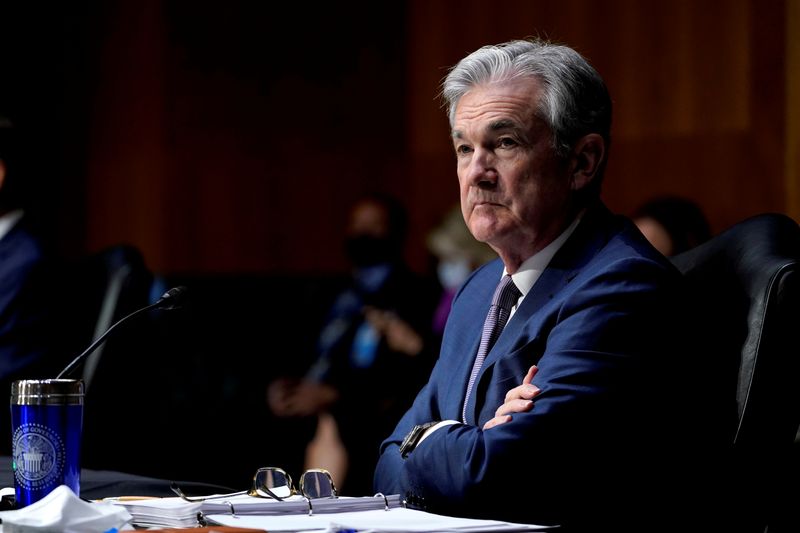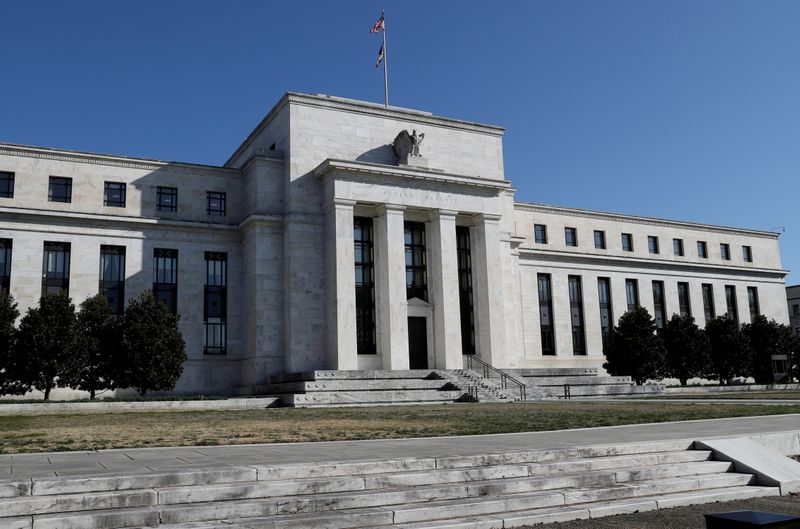WASHINGTON (Reuters) – The U.S. job market may have picked up steam in March, but the improvement was only a small step towards the Federal Reserve’s threshold for considering reining in its massive support for the economy.
That’s the signal from a broad index of labor market indicators developed by Cornerstone Macro economist Roberto Perli and which includes an array of statistics U.S. central bank officials have placed at the center of their analysis of the economy.
Perli’s index, using data since 1990, improved following the addition of nearly a million jobs to U.S. payrolls in March.
Nevertheless, the unemployment rate at 6% is more than 1.5 times above the low levels reached early last year. Other factors policymakers consider important in their analysis of the job market are even farther from their strongest readings.
(GRAPHIC: Labor market index – https://graphics.reuters.com/USA-ECONOMY/LABORINDEX/nmopaoxozpa/chart.png)
The employment-to-population ratio, at 57.8%, is nearly 7 percentage points short of its peak reading of 64.7% in April 2000 and more than 3 points below where it was before the COVID-19 pandemic, representing about 8 million adults not in jobs.
That’s unlikely to represent the “substantial further progress” towards labor market repair that the Fed has said must occur before it considers paring back its $120 billion in monthly bond purchases and, after that process is complete, discusses raising interest rates.
The March bump in jobs was “nice to see,” Cleveland Fed President Loretta Mester said this week on CNBC. But “we need more of those kind of job reports coming out to actually make more progress than we’ve seen thus far … I think we need to be very deliberately patient in our approach to monetary policy.”
(GRAPHIC: Substantial further progress for the Fed? – https://graphics.reuters.com/USA-ECONOMY/FEDPROGRESS/nmovazmdypa/chart.png)
The scheduled release on Wednesday of minutes from the Fed’s March 16-17 policy meeting will provide more details on how policymakers view an economy moving out of its pandemic crisis and into a period of potentially sustained higher growth.
The accelerating pace of U.S. COVID-19 vaccinations along with substantial moves by the federal government to provide economic support for families and businesses prompted several Fed officials at the meeting last month to project rate increases as early as next year. That opened a gap with the core of policymakers who don’t see rates rising until 2024 at the earliest.
Much will depend on how fast the job market catches up with where Fed officials feel it should be.
The country remains 8.4 million jobs short of the pre-pandemic level in February 2020, a fact on the minds of both the U.S. central bank and the Biden administration.
(GRAPHIC: The jobs hole facing Biden and the Fed – https://graphics.reuters.com/USA-ECONOMY/JOBS/xlbpgygrnpq/chart.png)
For the Fed, its goal of maximum employment does not involve a one-off measurement like the headline unemployment rate. It includes a broader set of concerns like the difference in unemployment rates between Blacks and whites, or the number of women kept from even looking for work because of family care responsibilities they shouldered during the pandemic.
From that perspective, the situation remains bad.
The Fed has not detailed exactly what “substantial further progress” might mean.
But policymakers including Fed Chair Jerome Powell have pointed to the months at the end of 2019 and early 2020, right before the onset of the pandemic, as a reference point for what they think the job market can return to without putting the economy at risk of “overheating” and causing an undue jump in inflation.
Perli has noted that there were stretches in the 1990s when workers had it even better. His index of 22 labor market indicators, combining each separate series with reference to when each hit its historic “best,” shows the economy remains far from its high-water mark for workers.
Along with labor force participation remaining low, people who have been out of work for more than half a year currently make up an abnormally large share of the unemployed, roughly 43%. Unemployment rates for Blacks and Hispanics, at 9.6% and 7.9%, respectively, also remain further from historical norms than the unemployment rate for whites at 5.4% – and all remain comparatively high.
Things could improve fast if the monthly pace of job creation continues at the same pace as in March, said Karim Basta, chief economist at III Capital Management, to the point where the Fed might begin talk of tapering its bond purchases as soon as its June 15-16 policy meeting.
“While Fed speakers will certainly highlight the ‘long way to go’ narrative, further 1 million-per-month job gains … will make it hard to refute ‘substantial further progress’ is being made,” he wrote.
Still, the U.S. central bank is in no rush.
The “favorable trend in the labor market needs to continue for a while and intensify before the Fed changes tune,” Perli said. Wednesday’s minutes “should reflect the unwavering commitment” of the Fed’s policy-setting committee to reaching maximum employment.
(Reporting by Howard Schneider; Editing by Dan Burns and Paul Simao)























